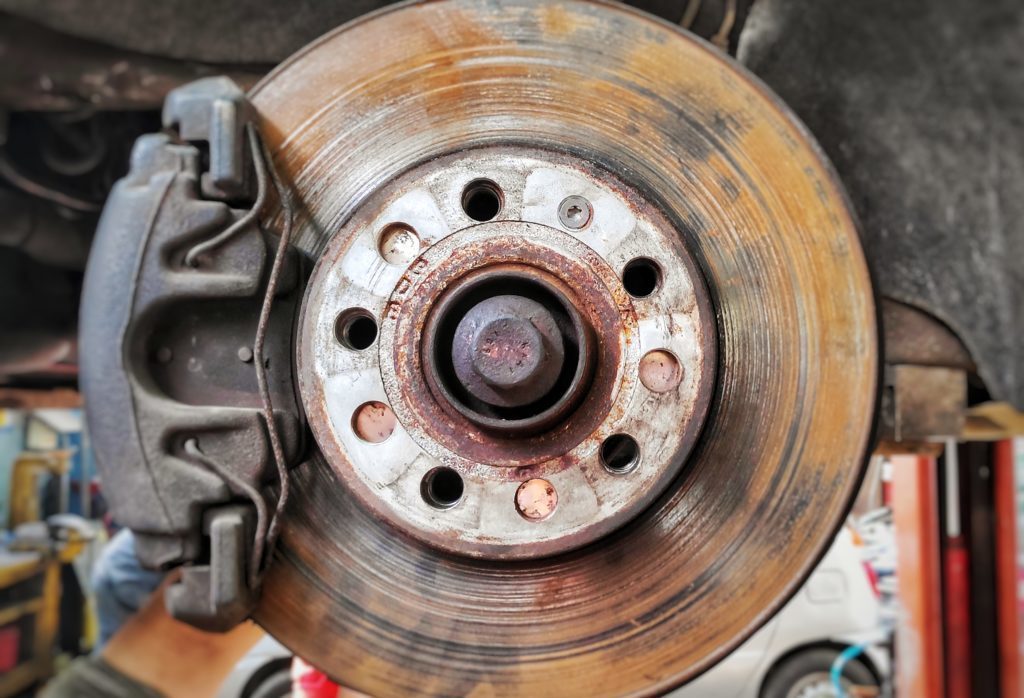Ever felt a shudder in your steering wheel when braking? Or heard a grinding noise that makes you cringe? These could be signs that your brake rotors need attention. Knowing when to replace brake rotors is essential for maintaining your vehicle's safety and performance. Ignoring these warning signs can lead to costly repairs and even dangerous driving situations. This guide will help you understand the importance of timely brake rotor replacement and provide the knowledge you need to make informed decisions about your vehicle's braking system.
Brake rotors are the metal discs that your brake pads clamp down on to slow or stop your vehicle. Over time, these rotors wear down due to friction and heat. Determining the right time for rotor replacement isn't always straightforward. It's not just about mileage; factors like driving habits, brake pad material, and even the climate you drive in can influence rotor lifespan. This complexity makes understanding the signs of wear and tear even more critical.
Historically, brake rotors were simpler and often lasted longer. Modern vehicles, with their increased performance capabilities, demand more from the braking system, leading to potentially faster rotor wear. The introduction of different rotor materials, like ceramic rotors, has also changed the replacement equation. While these advancements offer improved performance, they also necessitate a nuanced approach to maintenance.
The importance of timely brake rotor replacement cannot be overstated. Worn rotors compromise braking efficiency, increasing stopping distances and potentially leading to accidents. Beyond safety, worn rotors can damage other brake components, like calipers and pads, resulting in more extensive and expensive repairs. This makes proactive rotor maintenance a cost-effective strategy in the long run.
Recognizing the need for rotor replacement involves understanding the key indicators. These include vibrations in the steering wheel or brake pedal, grinding or squealing noises during braking, and visible signs of wear like grooves or scoring on the rotor surface. If you experience any of these symptoms, it's crucial to have your brakes inspected by a qualified mechanic.
One benefit of timely rotor resurfacing or replacement is improved braking performance. Fresh rotors provide a smooth, consistent braking surface, leading to shorter stopping distances and better control. Another benefit is extended brake pad life. Worn rotors can accelerate brake pad wear, leading to more frequent replacements. Finally, new rotors contribute to a quieter and smoother ride, eliminating vibrations and noise associated with worn-out components.
Creating an action plan for rotor replacement involves regular brake inspections, preferably every 12,000 to 15,000 miles. During these inspections, a mechanic should measure rotor thickness to ensure it meets manufacturer specifications. If the rotors are too thin or show signs of damage, replacement is recommended. Choose high-quality rotors that match your vehicle's specifications for optimal performance and longevity.
Advantages and Disadvantages of Timely Rotor Replacement
| Advantages | Disadvantages |
|---|---|
| Improved safety | Cost of replacement |
| Enhanced braking performance | Potential for unnecessary replacement if not properly diagnosed |
| Extended lifespan of other brake components |
Frequently Asked Questions:
1. How often should I replace my rotors? Answer: It depends on driving habits and vehicle type, but generally every 50,000 to 70,000 miles.
2. Can I replace rotors myself? Answer: While possible, it's recommended to have a professional mechanic perform the replacement.
3. What are the signs my rotors need replacing? Answer: Vibrations, grinding noises, and visible grooves on the rotor surface.
4. How much does rotor replacement cost? Answer: Costs vary depending on vehicle type and location, but typically range from $200 to $500 per axle.
5. Can rotors be resurfaced instead of replaced? Answer: Yes, if they are thick enough and the damage is not excessive.
6. What are the different types of brake rotors? Answer: Common types include standard, drilled, and slotted rotors.
7. How do I choose the right rotors for my car? Answer: Consult your vehicle's owner's manual or a qualified mechanic.
8. What happens if I don't replace my rotors when needed? Answer: Reduced braking performance, damage to other brake components, and potential safety hazards.
In conclusion, understanding when to replace your brake rotors is a critical aspect of vehicle maintenance. By recognizing the signs of wear, following recommended replacement intervals, and choosing quality replacement parts, you can ensure optimal braking performance and, most importantly, your safety on the road. Don't neglect your brakes. Regular inspections and timely rotor replacement are investments in your peace of mind and the longevity of your vehicle. Take action today to ensure your brakes are in top condition and avoid potential hazards down the road. Remember, proper brake maintenance is not just about the car; it's about the safety of everyone on the road.
Replacing Ford F150 Brake Pads And Rotors - The Brass Coq
Brake Rotors 2024 Chevy Silverado - The Brass Coq
F150 Brake Rotors And Pads - The Brass Coq
Brake Rotor Thickness Chart Chevy Impala Ford GM - The Brass Coq
Toyota Highlander Brakes And Rotors - The Brass Coq
Brake Rotors What You Need To Know - The Brass Coq
Replace Rear Brakes On 2015 Toyota Camry - The Brass Coq
How To Remove Distributor Cap at Alfred Morrison blog - The Brass Coq
when to replace rotor - The Brass Coq
What Is Brake Pads And Rotors at James Beck blog - The Brass Coq
Brake Rotor And Pad Install at Stacy Munn blog - The Brass Coq
How Long Do Brake Rotors Typically Last - The Brass Coq
Pads And Rotors Are at Rick Verde blog - The Brass Coq
The Different Types Of Brake Rotors All You Need To Know - The Brass Coq
Tools To Replace Brake Pads - The Brass Coq














